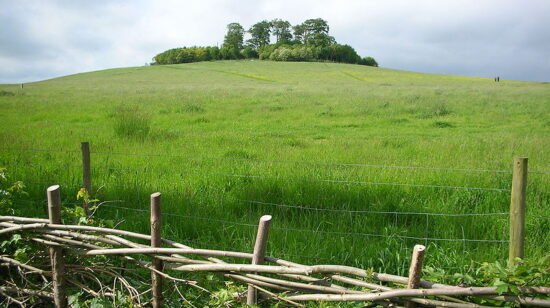
This Greek god was found on the side of an Iron Age cauldron, and we’re impressed by the fact that he’s got not one, not two, but THREE moustaches. So how did he end up in the grave of a Celtic prince in France?
French archaeologists were perfectly situated to toast their success after discovering the cauldron inside an ‘exceptional’ burial mound in Lavau, Champagne.
The burial mound (or ‘tumulus’ in archaeo-speak), has been dated to the 5th century BC, and houses the remains of a Celtic prince. Alongside a wealth of grave goods, archaeologists found that many of them were of Greek or Etruscan origin. Among them, the star find has to be this magnificently moustachioed bronze cauldron.
A Greek god in a Celtic grave

The cauldron, 1m in diameter, is adorned with eight lion heads and images of the Greek river god Achelous. In Greek mythology, Achelous once wrestled with the hero Herakles for the hand of the princess Deianeira. During the battle, Herakles savagely ripped a horn from Achelous’ head.
The horn later became a cornucopia or ‘horn of plenty’… though that was probably of little consolation to Achelous. He is represented on the cauldron as a horned and bearded male figure, with a bull ears and, most impressively, his magnificent triple moustache.
More than an Iron Age cauldron

Inside the cauldron a further discovery was made… an attic black figure wine jug, depicting Dionysus, the Greek god of wine, set with gold plating on the lip and foot.
The tomb itself is part of a wider funerary complex which also contains Bronze Age cremation graves and mounds separated by a system of moats, along with other early Iron Age burials including that of a ‘warrior’, complete with iron sword, and a woman adorned in solid bronze bracelets.
Connections between Mediterranean and ‘Celtic’ cultures
Although we might marvel at the splendour of these discoveries, that is of course not really why they’re significant – the discovery actually provides new insight into the extent of trade between Mediterranean and Celtic cultures in the 5th century BC.
For the Greek and Etruscan city states in the west, this was a period of increasing economic development and these discoveries – the ceramic wine jug in particular – are the northernmost examples of their kind so far. In search of slaves, metals and precious goods (like amber), Mediterranean traders came into contact with Celtic communities, whose elites acquired their goods. It reinvigorates research into contact between Celtic and Mediterranean cultures and demonstrates that these trade routes were more extensive, went further and were perhaps even more well-served than previously thought.
This is an edited version of an article originally published Mar 9, 2015.
Love archaeology?
DigVentures was born from a mission: to connect people who love archaeology with opportunities to DO archaeology. Together, we're making groundbreaking new discoveries that everyone can be part of, and creating archaeology content that we can all share, learn from and enjoy. Wherever you live and whatever your background, you can be part of it too.
Become a Subscriber





